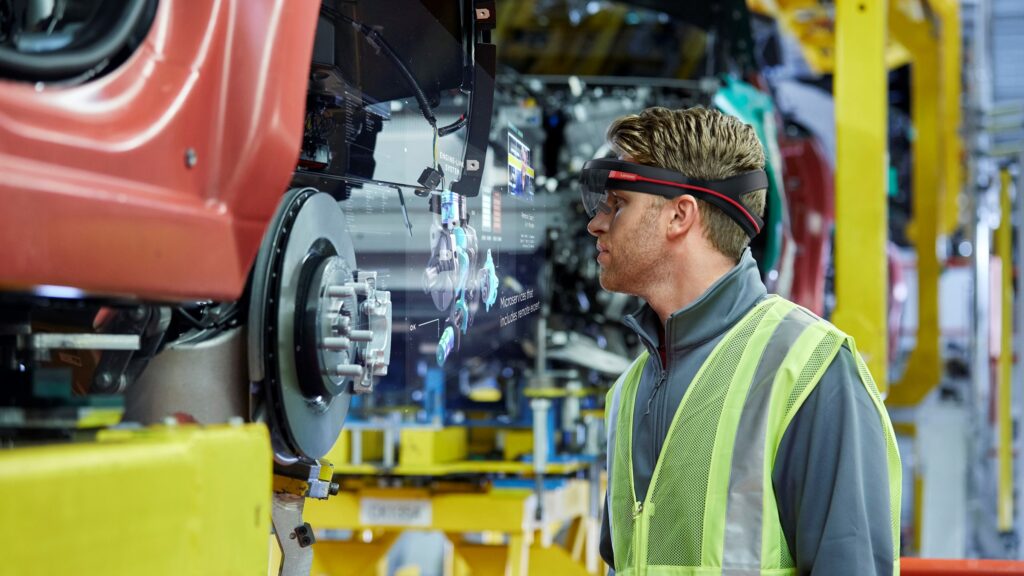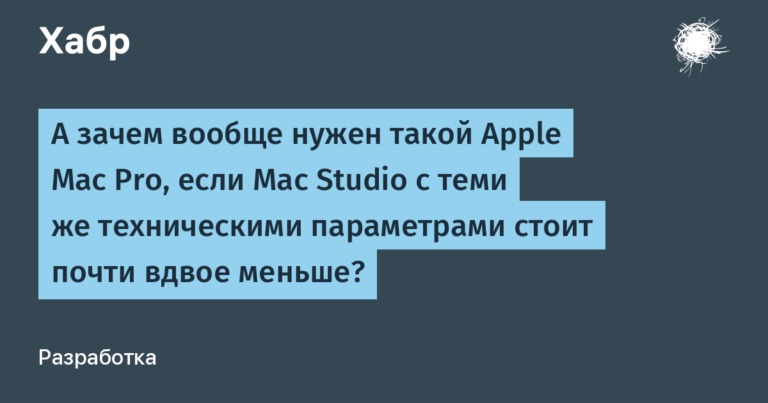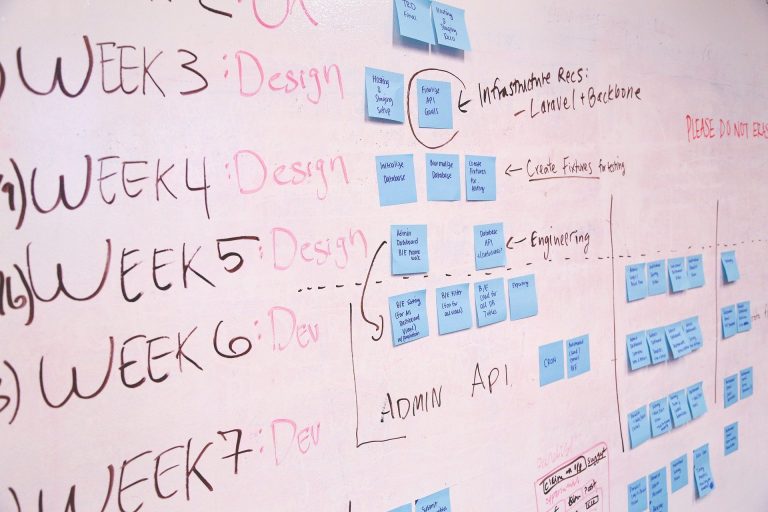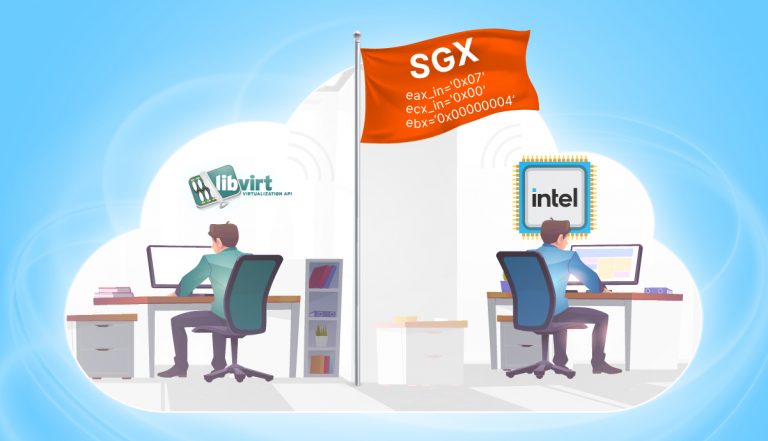Virtual and augmented reality come to manufacturing enterprises
Today, augmented (AR) and virtual reality (VR) technologies go beyond the game world. They are becoming more widespread in various industries, in particular, in the manufacturing industry. In an era in which data plays a huge role, and everything around is changing very quickly, and specialists have to constantly learn new skills, these developing technologies can significantly change the manufacturing industry, as we know it today.
What exactly is AR? This is a technology that allows you to see the product in its relative environment. It is superimposed on a computer-created image in the person’s view of the real world, and gives an expanded version of reality. On the other hand, when it comes to VR, you can put on a VR headset and immerse yourself in a fully virtual world and interact with objects in this virtual world as it happens in the real world.
AR / VR allows new generation employees to be more efficient, smarter, act faster and more accurately. This new wave of immersive technologies provides them with quick access to technical knowledge and data, makes it possible to interact with 3D models, collaborate with colleagues at a new level, and immerse themselves in a digital environment that improves the quality of interaction and training of specialists. Helping employees do more and be more productive, AR / VR technologies allow the company to solve all sorts of problems, sometimes in an unexpected and innovative way.
Today, as the manufacturing industry prepares to adapt to new challenges and opportunities, AR / VR can be a good foundation for it.

The new reality of production
Now in the United States in manufacturing 11.5 million people, accounting for 8.8% of the workforce, and their number continues to grow. A worldwide deficit in manufacturing is projected 7.9 million workers by 2030, which will lead to an unrealized economic effect of $ 607.1 billion.if ongoing initiatives remain unchanged.
According to Korn Ferry’s Future of Work, “developing countries with strong industrial centers may begin to compete due to a significant shortage of manufacturing personnel. According to forecasts, by 2030, Brazil will need 1.7 million workers in production, and in Indonesia the staff deficit could reach 1.6 million. The United States is already struggling with a shortage of highly skilled manufacturing personnel, and this deficit is expected to widen significantly over the next decade, reaching 383,000 by 2030, equivalent to more than 10% of the highly skilled workforce. ”
As a result, in an effort to eliminate the shortage of qualified personnel, the manufacturing industry, which has traditionally developed rather slowly, is rapidly moving to the integration of AR / VR technologies. According to IDC forecasts, global spending on AR / VR by 2023 reached 160 billion dollarswhich is significantly higher than the forecast of $ 16.8 billion for 2019, and over the five-year period, the total annual increase in spending on AR / VR can reach 78.3%. Commercial scenarios for using these technologies, which are expected to receive the largest investments in 2023, include areas such as training ($ 8.5 billion) and maintenance ($ 4.3 billion).

The growth rates of AR / VR use cases such as on-site assembly and security will outstrip the growth rate of AR (IDC) games.
With the increase in the number of enterprises using AR / VR technologies for various usage scenarios, the AR / R market expects growth, we are confident in IDC. These technologies will play a critical role in expanding human resources. Current hardware and software advances — initiatives and efforts by technology giants such as Google (ARCore), Apple (ARKit 3), and Microsoft (HoloLens) – will open up more opportunities and encourage widespread AR / VR.
Hardware will account for more than half of all AR / VR expenses. The costs of system integration services will grow at the fastest rates (94.8% per year), ahead of consulting services and application development, while software costs will grow by 70% annually. predicts IDC.
A strong increase in expenses for AR equipment, software and services (135.5% per year) will lead to a significant advance in the total expenses for AR costs for VR by the end of the forecast period (until 2023).
The increased use of AR / VR by enterprises will be a direct result of increased production volumes when companies introduce new technologies to increase productivity, safety and achieve high accuracy.
Practical training
According to Deloitte, it is expected that the number of new jobs in the manufacturing industry will increase by 1.96 million by 2028. This requires that industry not lag behind demand for new personnel, quickly adapt and integrate new technologies in order to increase both income and labor productivity.
Technical specialists should be able to quickly adapt to this environment and identify potential points of increase in efficiency in all their activities. One of the ways is precisely the use of new technologies that make it possible to improve the methods of training employees.
In most production environments, it is quite difficult to conduct training in practice, because it is unrealistic to disconnect equipment or a production line to instruct new employees. In addition, there are types of equipment that it would be too wasteful to purchase exclusively for training specialists.
Meanwhile, with the help of VR, it is quite possible to conduct field training: new employees find themselves in a virtual environment. This environment mimics the work that they will do in their workplaces. The opportunity to learn from real-life examples leads to an increase in the level of consolidation of knowledge and makes it possible to practice complex scenarios, to which students usually do not have access in traditional learning environments.
The technology also allows employees to perceive information using real-time applications, save time on traditional forms of training and gives them the experience needed to fill in the gaps. Companies also benefit because virtual training prevents the interruption of normal work processes and production cycles.
Over the next few months, there may be an urgent need for continuing education with AR / VR. According to the International Labor Organization, 21 million employers in the world are among the most affected by the economic crisis caused by the global COVID-19 pandemic.
Now enterprises are resuming and increasing production after a sudden and prolonged closure at the beginning of the year. Millions of workers and employees are likely to return to their jobs. This will occur at a faster pace than ever in history and will require accelerated retraining or retraining as new production processes and procedures are introduced.
Companies can combine classroom and business training in a virtual environment where users learn about the product / equipment and can immediately take practical training on virtual 3D models. Repetition will be an important practice for the quick execution of work tasks.
Safety and maintenance
The ability to remotely train employees takes the process to a whole new level, saves employers money in the long run and, most importantly, provides a safer environment. Despite the existence of manuals and training courses, employees must use other resources to effectively prepare for the various high-risk situations they may encounter during their careers. Thanks to AR technology, they can repeatedly pass through potentially dangerous scenarios, which helps to avoid work-related injuries and equipment damage.

For example, aerospace manufacturers use AR technology to increase efficiency and improve quality control at their installation and inspection sites. Employees use augmented reality glasses to view digital mockups on top of images of real systems to find faulty parts. This helps ensure safety and speeds up the maintenance process. AR helps to achieve high accuracy, and also accelerates the process of daily checks and controls.
Assembly line specialists usually make mistakes in complex assemblies, and the cost of reassembling a product is sometimes very high. AR will help to assemble the product with 100% accuracy. With its help, companies can greatly simplify the service process. In real time, users will go through the steps of the machine repair process, apply digital modeling to fix the problem.
Labor productivity and business performance
The result of the practice-oriented process of adaptation and training is the best and accelerated preparation of specialists to perform their daily tasks, which leads to increased labor productivity. In addition to training, AR / VR solutions help enterprises work smarter and more efficiently. For example, production company executives can use VR to train their employees to learn new skills, or AR solutions can give engineers access to interactive 3D visualization for faster assembly of specific components.
For years, these technologies have been developing to help enterprises become even more efficient. For example, to adapt to the growing mobility and manufacturability of the workforce, these solutions are now presented as glasses and helmetsthat can be used to deploy both simple and complex AR installations for enterprises. The result is reduced error probability, reduced system deployment time and reduced costs. In addition, direct managers can give specific instructions to subordinates so that they do their job better. Using virtual reality for training at every stage of the process – from initial design to assembly optimization – you can significantly increase productivity and productivity.
Whenever we buy a certain product, we want to try it out. Using AR and VR, you can see how the products fit into the client’s environment, their external and internal work. By combining AR / VR with gamification and game design, users can work better in a simulated environment, memorize better, and perform tasks better.
Looking to the future
Existing AR / VR platforms offer a proven, scalable, and streamlined path from concept validation to enterprise AR / VR deployment. In particular, they give employees the opportunity to reduce repair time, optimize work processes, improve the quality of training, eliminate errors and much more.

ThinkReality is the scalable cloud and software-independent AR / VR platform supported by Lenovo. ThinkReality systems are designed to create, deploy and manage enterprise virtual / augmented reality solutions.
Although AR / VR technologies continue to face obstacles to their integration in the industry, they will play an important role in the development of the industry in the coming years. Providing the required training, proper productivity and employee safety is just the starting point for the promising future of AR / VR in the manufacturing industry. Making plans for the future, businesses still see the value and ample opportunity of AR / VR to improve operations. By introducing more intelligent technologies into the corporate ecosystem, enterprises will transform, transform the manufacturing industry, which we are witnessing today.





